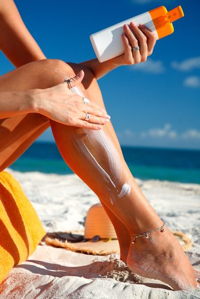
Researchers say it is the first time that a link can be made between exposure to cosmetics and the level of specific contaminants in the body. A recent study, which is part of Swiss national research programme on endocrine disruptors [1], shows that the presence of cosmetic UV filters in the human body is widespread and is correlated to product use.
Analytical data of milk samples
Three cohorts of human milk were sampled over three years (2004, 2005 and 2006) at maternity in Basel. The participants filled out a detailed questionnaire with a special focus on the use of cosmetic products.
Chemicals out of a large range of products, including persistent organic pollutants (POPs) but not limited to them, were analyzed in the same human milk sample. The list comprised cosmetic UV filters, synthetic musk fragrances, pesticides, phthalates, parabens, flame retardants (polybrominated diphenylethers), and polychlorinated biphenyls (PCBs); in total 89 analyses per milk sample. The chemical analytical data of milk samples of individual mothers were then compared with the information obtained through the questionnaire.
“Human milk was chosen because it provides direct information on exposure of the suckling infant and indirect information on exposure of the mother during pregnancy,” explain Margret Schlumpf and Walter Lichtensteiger, who lead the research.
Levels of UV filters correlated to cosmetic products use
The study found widespread presence of UV filters in the human body as they were detected in 85% of human milk samples, at concentrations comparable to PCBs. Synthetic musk fragrances were also present in the milk samples.
While the concentration in milk samples of classical contaminants such as PCBs, DDT and metabolites of DDT as well as some other persistent organochlor pesticides was generally similar, variations of UV filter concentrations were significant between samples. Actually, the presence of UV filters in human milk was correlated with the use of cosmetic products containing these UV filters. “It seems plausible that exposure to other cosmetic constituents such as synthetic fragrances is also linked to the use of the corresponding products. However, this could not be investigated because musk fragrances are not declared,” comment the authors.




























